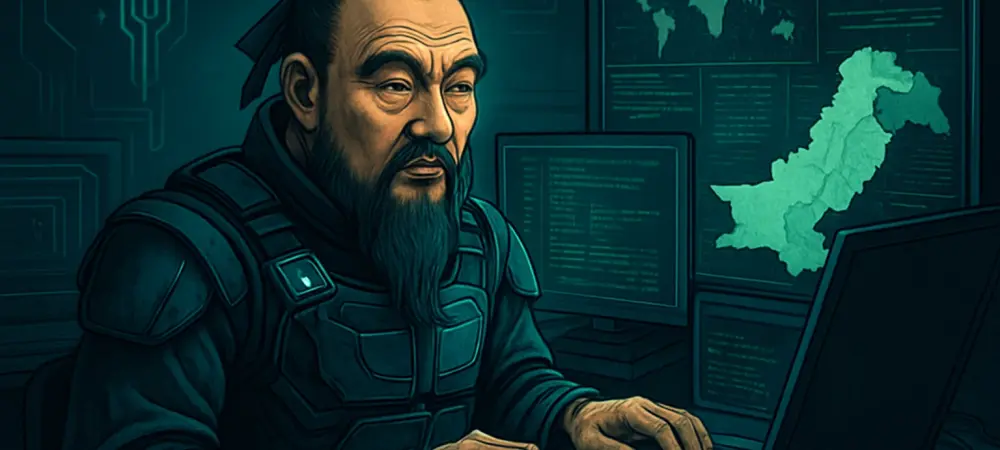Unveiling a Silent Threat: The Growing Menace of Confucius
What happens when a shadowy cyber-espionage group, operating under the radar for over a decade, refines its arsenal to strike with unprecedented precision in a region already fraught with geopolitical tension like South Asia? The Confucius group—suspected to be backed by state-sponsored interests—has emerged as a formidable digital adversary with Pakistan as its primary target, escalating from crude data theft to deploying sophisticated tools designed for long-term infiltration. The stakes have never been higher as critical infrastructure and national security hang in the balance.
This alarming transformation captures attention not just for its technical prowess but for the broader implications it carries. Cyberattacks are no longer isolated incidents; they are strategic moves in a larger game of power and influence. The evolution of Confucius signals a new era of cyber warfare, where stealth and persistence are paramount, compelling a closer look at how this group operates and what it means for those on the receiving end of its digital assaults.
The Bigger Picture: Cyber-Espionage in a Tense South Asian Arena
South Asia’s geopolitical landscape provides fertile ground for cyber operations, where digital battlefields often mirror physical ones. Confucius, active since at least 2013, has honed its focus on Pakistan, targeting government bodies, military units, and defense sectors with calculated precision. This persistent focus underscores a deeper intent, likely tied to regional rivalries, where information is as valuable as territory.
The significance of these attacks extends beyond individual breaches. They reflect a global trend of state-aligned cyber groups leveraging technology to gain strategic advantages. In a region marked by historical friction, the ability to infiltrate and monitor critical systems offers unparalleled leverage, making it imperative to understand the scope and scale of such threats in shaping international dynamics.
Tracing the Transformation: A Timeline of Tactical Shifts
The journey of Confucius’ cyber tactics reveals a clear arc of increasing sophistication. In earlier campaigns, around 2021, the group relied on basic spear-phishing and infostealers like WooperStealer to extract sensitive data, often using lures tied to high-profile spyware narratives to trick Pakistani military personnel. These methods, while effective, were limited in scope, focusing on quick grabs rather than sustained access.
By contrast, recent efforts show a marked shift toward persistence. Campaigns tracked from 2025 onward demonstrate the use of Python-based backdoors like AnonDoor, with notable activity involving temporary PowerShell scripts for prolonged system access. This transition highlights a strategic pivot, prioritizing long-term surveillance over immediate theft. Additionally, the group has diversified its attack vectors, moving from malicious documents to LNK files and MSIL downloaders, paired with complex obfuscation techniques like chained OLE objects to evade detection.
Technical advancements further illustrate this evolution. AnonDoor, for instance, employs unique data delimiters and geo-restricted command-and-control communications, ensuring operations remain focused on specific targets like Pakistan. Data from ongoing tracking since 2025 shows a deliberate effort to refine these tools, making each campaign more elusive and dangerous than the last, painting a picture of an adversary constantly adapting to countermeasures.
Expert Insights: Decoding the Strategy Behind the Evolution
To fully grasp the intent behind these changes, expert analysis provides critical perspective. Cybersecurity researchers have noted that the shift to Python-based malware offers dual benefits of stealth and ease of use, blending malicious activity with legitimate system processes. John Bambenek of Bambenek Consulting emphasizes, “Python’s ubiquity in legitimate applications makes it a perfect cover for attackers, reducing the need for new binaries while offering endless obfuscation possibilities.”
Beyond technical advantages, the focus on persistence mirrors a hallmark of state-sponsored espionage: the desire for continuous intelligence. Reports from ongoing studies in 2025 highlight how Confucius’ tactics align with broader trends, where long-term access to sensitive networks trumps one-off data grabs. This strategic mindset, blending technical innovation with geopolitical goals, reveals a calculated effort to maintain a digital foothold in targeted regions.
Arming Against the Threat: Building Robust Defenses
Understanding the nature of Confucius’ attacks is crucial, but actionable defense strategies are equally vital. Organizations must prioritize dynamic security measures to counter the group’s varied attack methods. Utilizing indicators of compromise (IoCs) shared by cybersecurity labs can enhance detection capabilities, allowing for early identification of potential breaches.
Specific vigilance against Python-based threats is recommended, focusing on monitoring unusual script activity within systems. Adopting adaptive defense mechanisms to address evolving vectors, such as LNK files or obfuscated payloads, strengthens resilience. These tailored steps aim to disrupt the group’s ability to establish persistent access, offering a practical framework for safeguarding critical assets.
Moreover, fostering a culture of cybersecurity awareness within institutions remains essential. Regular training on recognizing phishing attempts and suspicious file types can serve as a first line of defense. By combining technical solutions with proactive education, entities in vulnerable regions can better prepare for the sophisticated threats posed by actors like Confucius.
Reflecting on a Digital Battleground
Looking back, the relentless advancement of Confucius’ cyber tactics paints a stark picture of the challenges faced in a digitized world. Each campaign, from early data theft to intricate backdoors, marks a step forward in a shadowy conflict that transcends borders. The journey through South Asia’s cyber landscape reveals not just technical prowess but a deeper struggle for control and insight.
Moving forward, the emphasis must shift toward innovation in defense strategies. Strengthening international collaboration to share threat intelligence could disrupt such groups before they strike. Investing in cutting-edge detection tools and fostering resilience against emerging attack methods becomes a non-negotiable step. Ultimately, staying ahead of evolving threats demands a unified commitment to outpace adversaries in both skill and resolve.

